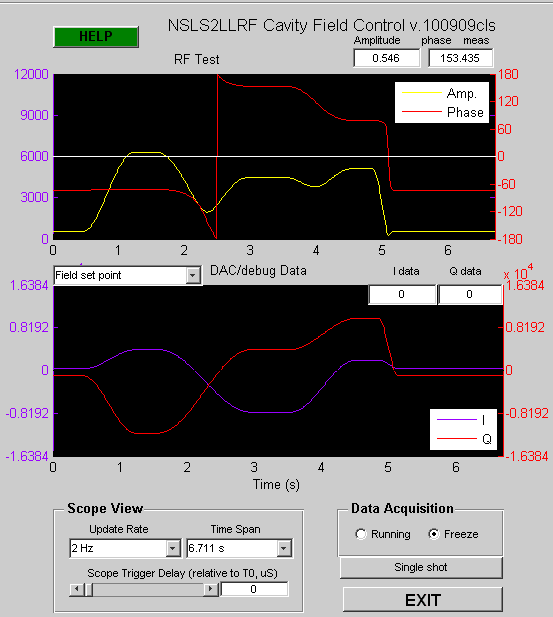
This module provides a ram buffer in which to hold a ramp waypoint table for both I and Q components of a waveform. The buffer is filled by a host via a host interface. When triggered, the module then clocks out the waypoints at a rate also determined by the host, and interpolates between them so as to provide a smoothly changing ramp.
Ports | Parameters | Notes | Example | Illustration
| clk | input | The clock input. |
| reset | input | The reset input. |
| en | input | An enable input. The state of the module is frozen when at logic zero. |
| go | input | Command to initiate a cycle. |
| interval | input | The interval in clocks between waypoints. |
| step | output | The difference between successive waypoints. |
| incr | output | The accumulated increments. |
| clk_hi | input | Host-interface clock. |
| ready_hi | output | Indicates that the table is ready to receive a block of data. |
| strobe_hi | input | Strobe signal marking start of a packet. |
| bufwri_hi | input | Data-valid signal. |
| pipe_hi | input | Data pipe to logic. |
| dwidth | 16 | Width of the ramp-waypoint data (to be interpolated. |
| awidth | 11 | Width of the waypoint address counter. |
| iwidth | 16 | Width of the inter-waypoint clock counter. |
| swidth | 10 | Width of the word holding the ramp step between waypoints. |
| blksize | 512 | Something |
wire [2*15-1:0] rampout;
wire [ 19:0] interval;
wire [ 1:0] quadrant; // rotates among the four quadrants
wire [15-1:0] hostdatapath;
RampInterp
#(.dwidth(15), .awidth(20), .iwidth(10), .swidth(8), .blksize(512))
InterpIncr_inst (
.clk(clk),
.reset(reset),
.en(enable),
.fiducial(fid),
.go(go),
.interval(interval),
.quad(quadrant),
.ramp(rampout),
.busy(busy),
.valid(waypointvalid),
.done(done),
// host-interface ports for the waypoint table
.clk_hi(hostclock),
.ready_hi(readytoload),
.strobe_hi(strobe),
.bufwr_hi(hostwrite),
.pipe_hi(hostdatapath)
);
